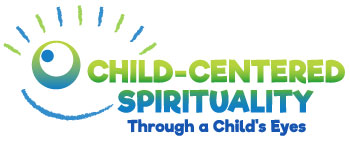 With two nieces on top-ranked college volleyball teams (Hawaii and UCLA) I sat in a lot of gyms watching serves and returns.
With two nieces on top-ranked college volleyball teams (Hawaii and UCLA) I sat in a lot of gyms watching serves and returns.
Serve-and-return parenting
Psychologists sometimes use the term “serve and return parenting” to refer to face-to-face, back-and-forth interactions between caregivers and their babies. Science Journalist Paul Tough observes that these interactions create secure attachments and they motivate a child’s enthusiasm in practicing social interaction, speech and language.
 But I also observe the same serve and return dynamics in the development of human spirituality, sparking growth in conscience and character.
But I also observe the same serve and return dynamics in the development of human spirituality, sparking growth in conscience and character.
Serve-and-return spirituality
Children experience the calm in the inner space of their human spirit that they need to incubate perseverance, tenacity, and the other significant character qualities. These character qualities then carry over into their everyday life.
From serve-and-return spirituality flows an ability to calm oneself– spiritual self-soothing, so to speak. This ability to calm oneself helps children persevere through problems and to begin seeing mistakes as opportunities for learning.
Take perseverance and tenacity, for example–
“In order for kids to have perseverance and tenacity in school later on, they need to start with self-regulatory abilities—the ability to calm themselves down, to focus on something for long periods of time, executive functions, as researchers sometimes call them,” explains Mr. Tough.
Parents know all too well that their child’s self-regulatory abilities, or lack of them, mimic their own. What do you do under stress? Are you easily distracted?
Besides modeling for them, we teach younger children through activities, and older children by listening and coaching. Parents contributed these examples below that have worked for their families. What’s working for you?
Activities to practice serve-and-return spirituality
Infant – age 3: Hold the child in your lap when you’re meditating or praying to show them the habit of sitting quietly and mimicking what you do, followed by smiling, talking, laughing.
Age 4-6: Your bedtime rituals establish a family culture of serve-and-return. Your face-to-face, back-and-forth communication carries a message of unity and belonging: “These are the books, songs, chants, or prayers this family uses at bedtime and no other family uses the exact same ones. We belong to each other.”
Age 7-12: Breakfast Club (can also be done in the car en route to school): Siblings (and adults) take turns going back-and-forth with each other for a short affirmation such as:
- I wish you well in your book report today.
- I saw you studying for your math test. You can relax because you are well-prepared.
- I know you can handle anything that happens today.
Tweetable:
- Serve and return spirituality sparks growth in a child’s character and conscience. Click to Tweet
- It pays to turn more attention to developing childhood spirituality. Three simple activities here. Click to Tweet
